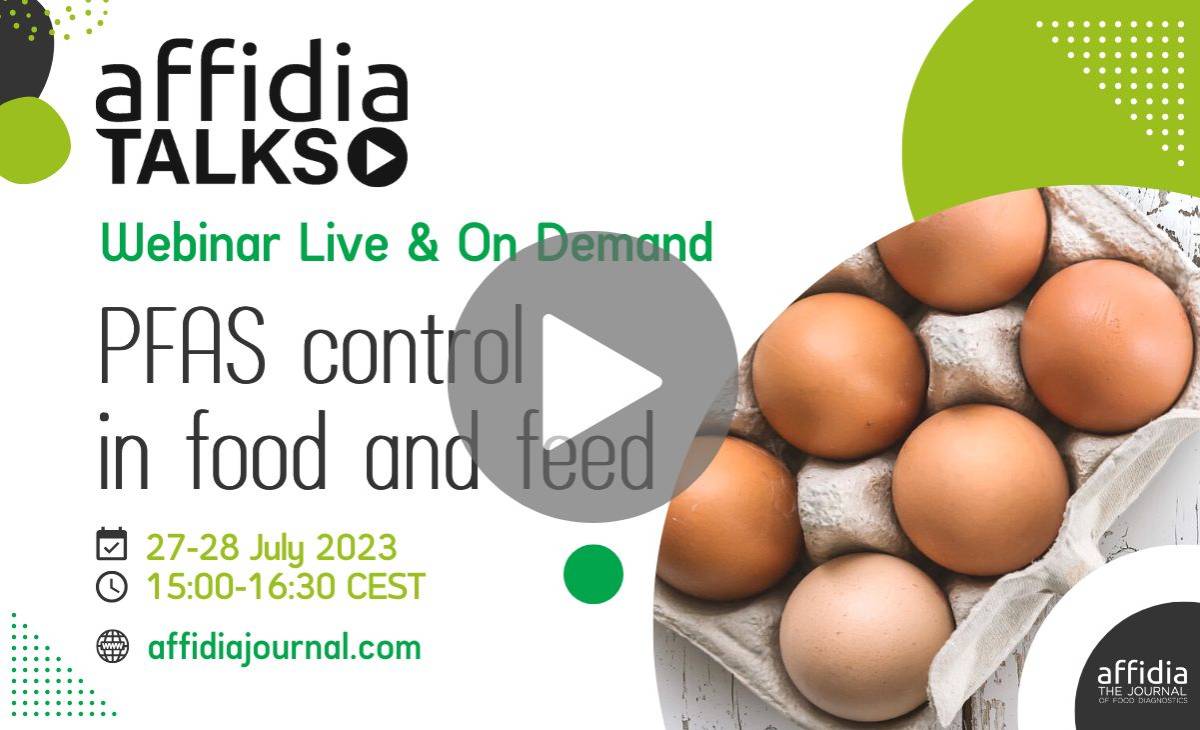Per- and polyfluoroalkyl substances (PFAS) are extremely stable chemical substances. This characteristic made them very useful for some industrial applications, but it makes them one of the most Persistent Organic Pollutants (POPs). They accumulate in agricultural soil and water and then in living organisms, both plants and animals. Exposure to PFAS leads to several health problems in animals and humans. Even if the use of the most toxic PFAS was already stopped, the high level of environmental pollution and the stability of such molecules create the conditions for their presence in the food chain. The concentration of PFAS in food is relatively low (fractions of ppb, mostly) but they are highly toxic, so it is already evident that part of the population in industrialized countries is overexposed and there is a risk to their health. The European Food Safety Authority (EFSA) established in 2020 a group Tolerable Weekly Intake of 4.4 ng/kg body weight. The risk assessment concluded that “part of the European population” is currently exposed above this level. The TWI is very low exactly because we, day by day, accumulate those contaminants in our bodies.
The EU Commission, for the moment, listed “indicative levels” of PFAS for several foods, as well as the adequate LODs (EU Recommendation 2022/1431). LODs in fruits, as an example, should be in the range of 1-4 ng/kg (ppt). In milk the LODs should be between 10 and 40 ppt (10 ppt for PFOS and PFOA). In this document, it is clearly stated that the feed and water of farmed animals must be analyzed when the animal products are above the indicative levels (for example,10-60 ppt in milk). Just a few months after that Recommendation, the EU Commission published a few Maximum Limits for PFAS in food. Currently, there are thresholds for eggs, fish, seafood and meat. The LMs are between 0.2 and 50 ppb.
Testing of PFAS in food and feed is not easy. The Limit of Detections and Quantifications required are so low that even background presence in laboratory solvents or contamination by inappropriate sample containers can create wrong results.
In this AffidiaTalks we will explain why, when, how, and where the PFAS can get to feed and food. We will give you a picture of human exposure, that is due to several sources. We will ask a number of experts to share their knowledge on different approaches to PFAS detection and the degree of reliability of analytical services.

Affidia Talks are solution-oriented virtual events that provide insights into hot topics of food safety and food control.
Our speakers and panelists are independent experts with decades of experience. They will guide you through the latest regulations, the most innovative control strategies, and how the science is changing.
With our webinars we aim to give you informative contents, which may be presented in different formats (presentations, video interviews, and/or panel discussions).
As in any Affidia Talks, there will be a clear separation between the free opinions of the experts, the points-of-view of the stakeholders, and the advertisements of suppliers of products or services that decided to support the event.
This webinar will provide valuable information to:
• food and feed safety professionals;
• food and feed technologists;
• safety and quality managers;
• food and feed safety auditors;
• food and feed regulatory experts;
• laboratory directors, managers, and supervisors;
• plant operations;
• production specialists;
• food and feed scientists.
If you miss the live event, visit www.affidiajournal.com and watch it on demand (registration is required).
By participating in our webinar, you'll gain access to a range of exclusive opportunities:
For any question or doubt, do not hesitate to contact us at this email [email protected]
The Affidia Journal team is always available for any queries, write to us and we will get back to you as soon as possible
Price does not include VAT, which will be charged where appropriate.
Please, send a certificate attesting such status to [email protected]
* <30 years old
‡ title obtained less than 12 months ago.
Price does not include VAT, which will be charged where appropriate.